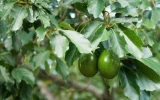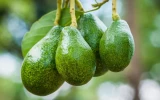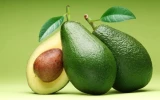What Time of Year Do Avocado Trees Bear Fruit? (Season Chart)
Avocado trees are all the rage these days for their delicious and nutritious fruit, which is used in many diverse recipes. As a homeowner or avid gardener, you may be considering planting an avocado tree in your yard but wondering when exactly it will bear fruit. Understanding the seasonality of avocado trees is essential to planning your planting and harvest accordingly.
Avocado trees, once mature, bear fruit typically between December and May.
- Hass avocados from spring to early summer
- Fuerte starts in winter
- Bacon in the winter months
- Mexican starts in late summer
- Reed starts in late spring
- Lamb Hass in late spring
- and Pinkerton in winter.
Whether you're an experienced gardener or a beginner, this article is a practical resource to help you determine the best time to enjoy your home-grown avocados. You'll also learn that the fruiting season varies per region, such as in North and South America, Israel, South Africa, Australia, and Spain.
Understanding what time of year avocado trees typically bear fruit guides expectations for crop cycles when starting an avocado farm from scratch.
Summary
- Hass, Fuerte, Bacon, Mexican, Reed, Lamb Hass, and Pinkerton, have distinct fruiting seasons, ranging from early winter to late fall.
- Local climate can influence avocado fruiting; the same variety may bear fruit at different times in different regions.
- Some varieties like Hass can offer a nearly year-round harvest in ideal conditions, providing avocados at various stages of ripeness throughout the year.
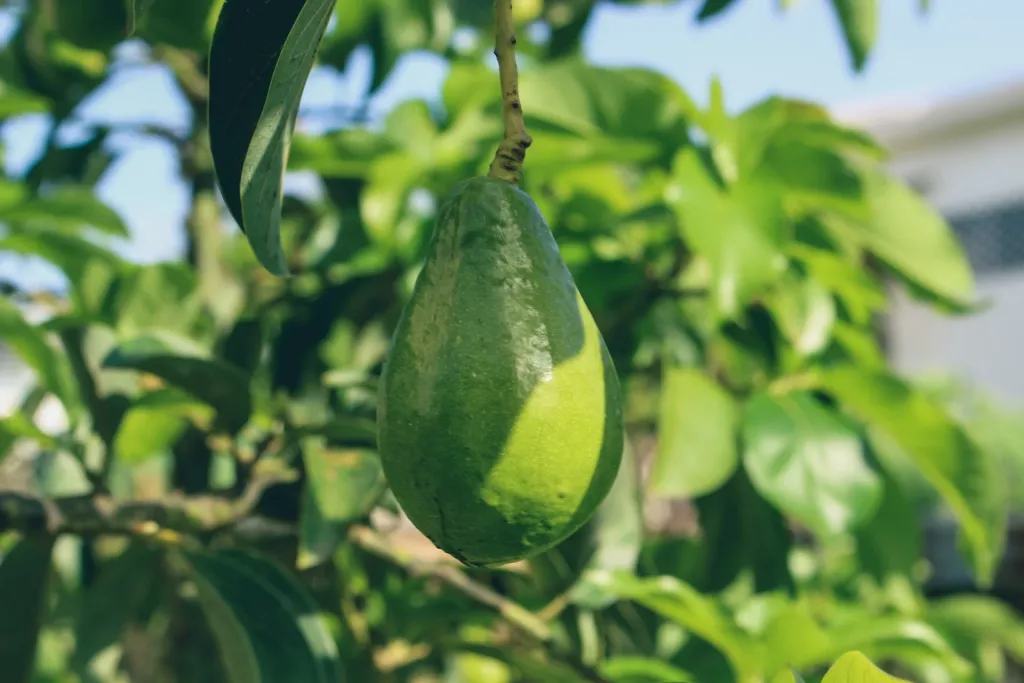
On this page:
Avocado Tree Fruiting Season
Avocado trees are known for taking their time to mature and produce fruit, which can be anywhere from 3 to 13 years after planting. Once they do start producing, the fruit is typically harvested between December and May, spanning the winter and spring seasons.
Here's a table summarizing the fruiting season of each avocado variety:
| Variety | Fruiting Time | Typical Months |
|---|---|---|
| Hass | Spring to early summer | March–June |
| Fuerte | Winter to early spring | December–April |
| Bacon | Early winter to early spring | December–March |
| Mexican | Late summer to early fall | August–October |
| Reed | Late spring to summer | May–July |
| Lamb Hass | Late spring to early summer | May–July |
| Pinkerton | Early winter to spring | December–April |
Hass avocado
Hass avocados are unique for their year-round fruiting capability in some regions. They typically have a peak season in spring and summer, but in ideal conditions, you might find them fruiting at various stages of ripeness throughout the year.
Typically, Hass avocados bear fruit from spring to fall. But here's the cool part – they often have what's known as "year-round" fruiting. This means you can find Hass avocados at different stages of ripeness throughout the year.
Hass avocados are the rockstars of the avocado world. They're creamy, nutty, and just perfect for that guacamole or avocado toast.
Fuerte avocado
The Fuerte avocado is an early producer, often starting in late fall. Its season extends through spring, making it one of the first varieties to provide fruit each year. This seasonality makes it a valuable variety for extending the avocado availability beyond the traditional summer months.
Fuerte avocados usually hit their stride in the late fall and continue through spring. So, if you're itching for some avocado goodness early in the year, Fuerte's got your back. These avocados are slightly less creamy than Hass, but they make up for it with a more distinct, slightly sweet flavor.

Bacon avocado
Bacon avocados are notable for their winter fruiting season. They are among the earliest varieties to ripen, providing avocados during a time when few other varieties are available. Their seasonality is especially beneficial in areas with milder winters, as they can tolerate cooler temperatures better than many other varieties.
If you're dreaming of avocados in your Christmas stocking, Bacon varieties might just make that dream come true. They have a lighter taste and a more watery texture, perfect for those who find Hass a bit too rich.
Mexican avocado
This variety usually bears fruit in the summer through early fall. It's known for its thinner skin and is often used in traditional Mexican cuisine.
Reed avocado
Reed avocados are mid to late-season producers. They are larger, round avocados with a thick skin, offering a generous amount of creamy flesh.
Lamb Hass avocado
Lamb Hass is a variety that bears fruit slightly later than the traditional Hass. Its season runs from late spring to early fall, providing a longer window for Hass-like avocados.
Pinkerton avocado
Pinkerton avocados are early to mid-season producers. Their fruiting season typically starts in winter and goes into early spring. They're known for their elongated shape and smaller seed, which means more delicious avocado flesh.
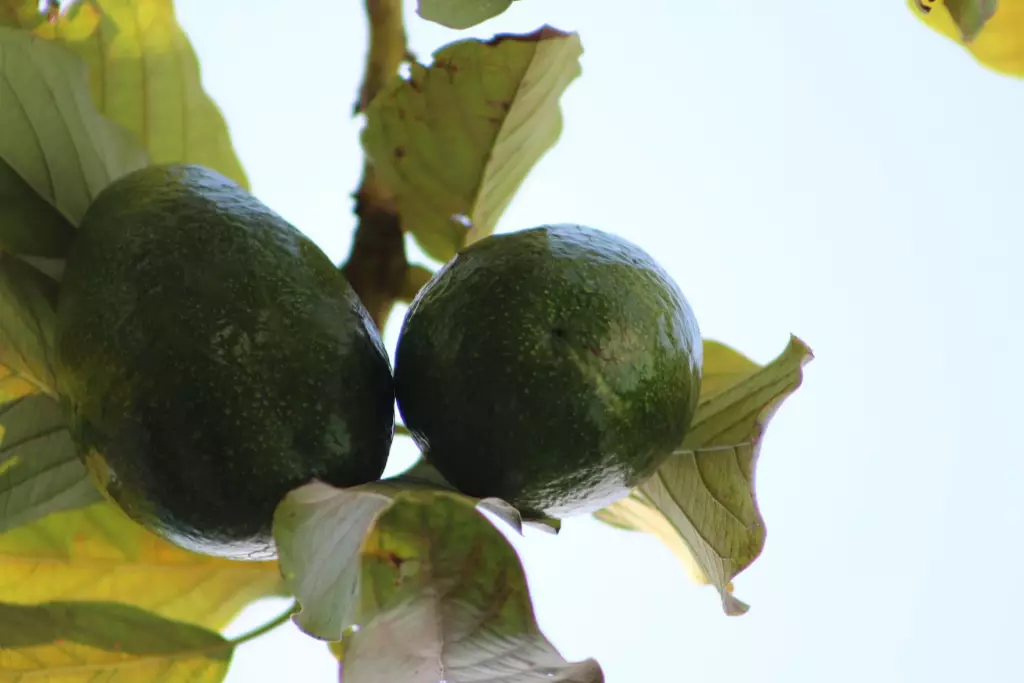
Growth and Bearing Cycle
Growth habits
Avocado trees are known for their slow growth and can take several years to start producing fruit. The frequency of fruit production depends on factors such as the tree's age, avocado variety, and growing conditions.
Flowering patterns
Each year, avocado trees produce thousands of flowers during a specific period. Although not every flower will become a fruit, understanding your avocado tree's flowering patterns can help you know what to expect during the fruiting season.
Avocado trees flower in clusters called inflorescences, and each flower has both male and female organs. The unique feature of avocado flowers is that they open and close at different times, which helps promote cross-pollination.
During the flowering period, your avocado tree will start to produce blossoms that will eventually develop into delicious avocados. The right environment for your avocado tree should have the following:
- 6–8 hours of direct sunlight
- a good soil pH between 6-7
- temperatures exceeding 60°F (15.5°C)
Pollination and fruit set
Various factors affect avocado pollination, such as environmental conditions and the tree's age. It's also essential to know that not all flowers will turn into fruit; avocado trees typically experience a high rate of flower drop. Appropriate pollination is critical for a healthy and abundant fruit set, and having a mix of different avocado varieties can help improve pollination.
External factors such as temperature, humidity, and wind can also impact pollination and fruit production. Maintaining your tree in optimal conditions, knowing the lifespan of avocado trees, and paying attention to environmental changes can help increase your tree's fruit yield in the long run.
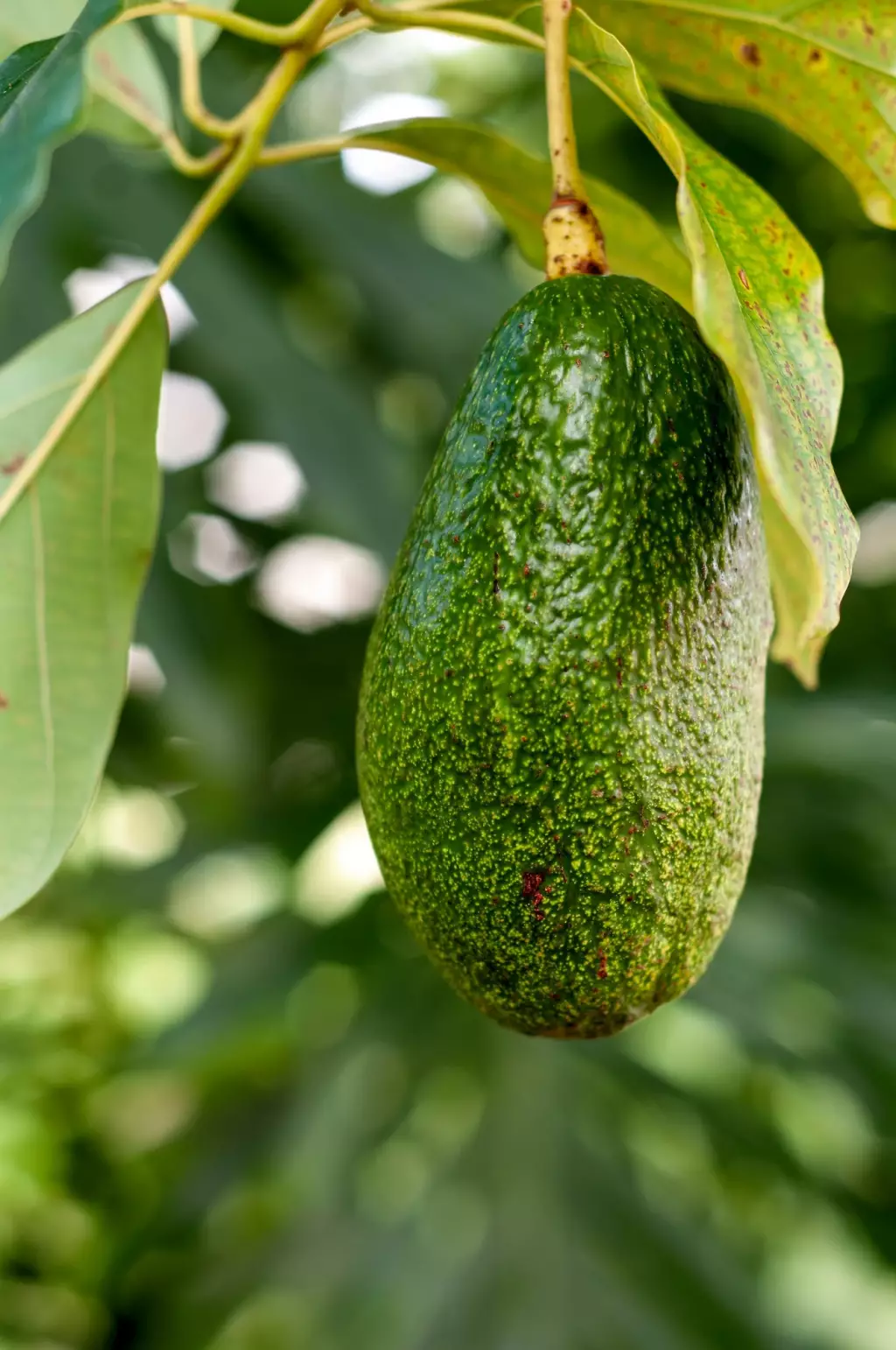
Fruiting timeline
The timeline for avocado trees to bear fruit varies greatly depending on whether you've grown the tree from a pit or purchased a grafted tree. If you've grown your tree from a pit, patience is key, as it will take at least 10 years for it to start bearing fruit, with some varieties taking up to 15 years.
However, if you're looking for fruit sooner, opt to purchase a grafted tree from a nursery or garden center. Some popular fast-growing avocado varieties, such as Hass and Bacon, can start producing fruit as early as 3–4 years after being planted.
To enjoy ripe avocados, remember that they usually harden on the tree and reach full ripeness once detached. Pick avocados when they are ripe or collect those that have fallen off to savor their delightful taste.
The time of year when avocado trees bear fruit, which varies based on the climate and variety, influences the number of trees planted per acre, as it affects the harvesting schedule and the management of the orchard's workload.
Regional Variations in Avocado Fruit Season
North America
In North America, particularly in the United States, avocado production is mainly focused on California and Florida. In California, Hass avocados are the dominant variety, and they typically bear fruit between June and October. Florida, on the other hand, is known for its green-skinned avocados, which have a more extended season, often starting in May and ending in November.
South America
South America is home to a wide variety of avocado types. Since the climate in this region is so diverse, avocados can be harvested throughout the year.
In countries like Colombia and Peru, where Hass avocados are the primary variety, their fruit-bearing season spans from June to October. In other areas with more tropical climates, like some regions in Brazil, you might find different avocado varieties with different fruit-bearing seasons.
Other growing regions
Several other growing regions produce avocados, such as Israel, South Africa, Australia, and Spain. In these regions, the timing of avocado fruit-bearing varies according to the local climate and the specific avocado cultivars grown.
For example, in Spain, the 'Bacon' avocado variety's harvest season can start as early as September. Meanwhile, in Australia, the season for Shepard avocados typically begins in February and extends until June.

